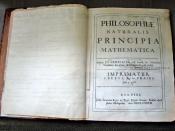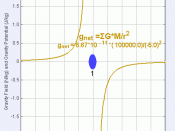Aim:
a:, To observe changes in motion due to changes in force and measure force, mass and acceleration, and examine their influence on motion.
b: To investigate the relationship between the variables; mass, force and acceleration and determine an inertial mass through the use of a trolley, ticker-timer and set of slotted masses.
Introduction:
Newton's second law states "The acceleration of an object as produced by a net force is directly proportional to the magnitude of the net force, in the same direction as the net force, and inversely proportional to the mass of the object.." Unlike Newton's first law, the second law deals with objects and forces that are not balanced. The law simply states that the acceleration of an object depends on the net force acting upon the object and the mass of the object.
This means that a is proportional to F, and 1/m.
Basically, Newton's second law of motion can be summarized as:
F=ma
Or, Force is equal to Mass x Acceleration.
Hypothesis:
As the slotted masses are added to the mass carrier, the acceleration of the system will increase proportionally. Therefore when acceleration is plotted against force for each run, a straight line trend should be formed.
Diagram:
(included in word document)
Procedure:
The apparatus was set up as in the diagram. A mass carrier was suspended to a long piece of string, over the edge of a table, and then passed through a pulley on the corner of the table and attached at the other end of the string to a trolley. The trolley was attached to a length of ticker-timer tape, which passed through a ticker-timer, connected to an AC power supply. The ticker-timer tape, trolley and string were all lined up horizontally, to reduce errors due to friction in the final...


